
The extensive use of fossil fuels by humans has led to a continuous increase in carbon dioxide emissions. According to relevant statistics, 73% of global greenhouse gas emissions are attributed to energy consumption. The significant greenhouse gas emissions contribute to the intensification of the greenhouse effect, resulting in a global temperature rise of approximately 1℃ compared to pre-industrial levels. Melting glaciers in polar regions, thawing permafrost and ice caps in cold regions, rising sea levels, and increased frequency of extreme weather events all impact the survival of humans and other organisms. To mitigate global climate change, it is imperative for people to utilize renewable energy sources.
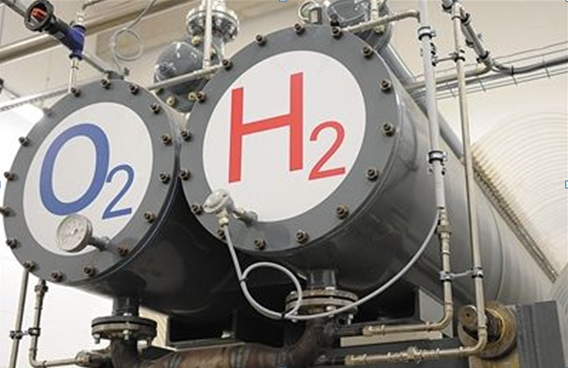
In the current energy structure, sources such as petroleum, natural gas, wind energy, and solar energy are considered primary energy sources as they are unprocessed and difficult to utilize directly. They need to be processed and converted into secondary energy sources like electricity or gasoline for convenient use. Currently, hydrogen energy is regarded as the cleanest new energy source. However, obtaining hydrogen energy requires the preparation of other energy sources, and it cannot be directly utilized by people. Depending on the method of production, hydrogen gas can be categorized as gray hydrogen, blue hydrogen, and green hydrogen.
Renewable energy of CarNeuTec™ Environmental Intelligent Decarbonization Center
(1)Basic process introduction
The CarNeuTec™ Environmental Intelligent Decarbonization Center, developed independently by Zhonghuan International, incorporates technology from the American Durr Chemical Research Institute. It consists of three core smart systems: the Smart Green Classifier, the Environmentally Friendly and Renewable Pyrolysis Zone, and the ECO-4R Thermal Output Area.
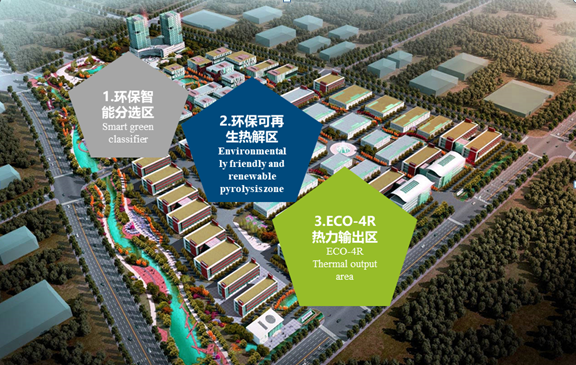
A. Smart Green Classifier utilizes fully automated and AI-powered recognition and sorting to separate waste rubber and plastic products into directly usable and non-directly usable materials.
B. Environmentally Friendly and Renewable Pyrolysis Zone precisely controls the temperature of the non-directly usable materials sorted in the previous zone, conducts deep pyrolysis treatment, and separates them into liquid fuel, gas fuel, steel wire, and biomass fuel.
C. ECO-4R Thermal Output Area physically converts the liquid fuel, gas fuel, hot water, and biomass fuel generated from the previous zone, ultimately producing renewable energy primarily composed of liquid fuel, biomass fuel, and gas fuel, as well as industrial hot water and industrial steam.
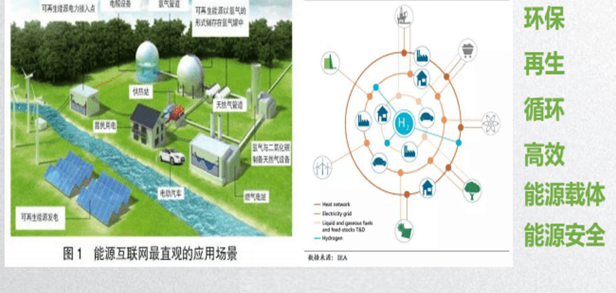
(2)The application of renewable energy in the field of hydrogen production
The application of renewable energy in the field of hydrogen production is a crucial aspect of future green hydrogen production. To achieve large-scale production and utilization of green hydrogen, low-cost renewable energy is more suitable for decentralized hydrogen production. By utilizing renewable energy sources through strategies such as curtailed wind and solar power, it not only reduces electricity costs but also effectively addresses the issue of renewable energy integration, achieving the desired production capacity. In terms of pollutant emissions, the carbon footprint of hydrogen production from renewable energy sources is lower compared to natural gas, methanol, byproduct gas, and coal.
The liquid fuel and biomass fuel produced by the CarNeuTec™ Environmental Intelligent Decarbonization Center can provide heat for hydrogen production in heavy industries. The pre-purified gas fuel (primarily natural gas) can supply heat for hydrogen production in light industries. Moreover, the thermal energy generated during the production process in the CarNeuTec™ center, along with fuel-generated electricity, can be utilized for water electrolysis, resulting in zero emissions and pollution. The renewable energy generated by the CarNeuTec™ center is cleaner compared to primary energy sources, significantly reducing the cost of hydrogen production and improving efficiency, thereby facilitating large-scale production.
Advantages of renewable energy in hydrogen production
From the perspective of carbon emissions, the input energy for hydrogen production from renewable sources should come entirely from renewable energy, and the hydrogen production process should be environmentally friendly with a total carbon emission that meets the green hydrogen standard (less than 4.9 kg CO2e/kg H2).
From a cost perspective, renewable energy is relatively inexpensive compared to conventional energy sources, and the output thermal energy is equivalent to that of conventional energy sources. The efficiency is comparable, and the process is simple. Therefore, renewable energy-based hydrogen production is not limited by scale and can be widely applied in industrial production.
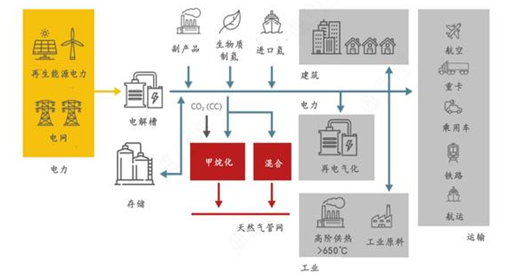
From a scalability perspective, the hydrogen production method should be reproducible and have the conditions for large-scale production. The combination of renewable energy and energy storage technologies makes hydrogen production more convenient compared to conventional energy sources and provides advantages for continuous and scalable production.
In terms of production efficiency, renewable energy sources are better suited to meet the hydrogen production standards in terms of heat value. Due to their plasticity, decomposition, and aggregation properties, renewable energy sources offer greater operability during hydrogen production, leading to higher efficiency.
From an energy utilization perspective, with the increasing scarcity of natural energy resources and the growing demand for societal energy needs, the rational utilization of renewable energy has become urgent. Renewable energy-based hydrogen production can serve as a carrier of green and clean energy and as a means of energy storage. This approach can help reduce the consumption of traditional energy sources such as electricity and heat associated with conventional hydrogen production techniques. Renewable energy-based hydrogen production can be used as a means of regulating energy consumption by storing surplus intermittent energy and converting it into other required forms when energy is scarce. Stable and reliable renewable energy sources are the desired energy supply for hydrogen production.
The future development of hydrogen production using renewable energy sources
Hydrogen produced using renewable energy sources is known as green hydrogen, which is currently the cleanest form of hydrogen compared to gray hydrogen. Green hydrogen is generated through electrolysis of water using renewable energy, resulting in minimal carbon emissions during production. It is often referred to as "zero-carbon hydrogen."
In summary, the different colors of hydrogen represent the cleanliness of the hydrogen production process. Gray hydrogen has the highest carbon emissions and is the least clean, while green hydrogen has the lowest carbon emissions and is the cleanest.
As a crucial direction for energy technology revolution, green hydrogen's potential and importance have gained global recognition. It is considered one of the most promising clean energy sources of the 21st century. Hydrogen, with its advantages of cleanliness, high energy efficiency, wide availability, and energy storage capability, is regarded as the "ultimate energy source." It is the optimal choice for replacing fossil fuels in the future and can effectively address renewable energy integration challenges, contributing to solving energy crises, global warming, environmental pollution, and more. Therefore, hydrogen energy possesses highly competitive advantages and is favored by people worldwide.
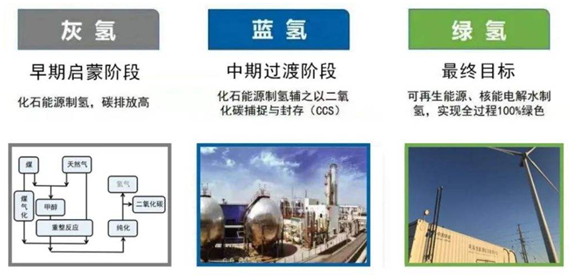
Hydrogen energy possesses a high energy density, being three times that of gasoline and 130 times that of lithium batteries. This characteristic has led to an increasing prominence of hydrogen fuel in the substitution process, making it an efficient and clean secondary energy source. Fuel cells can achieve a comprehensive conversion efficiency of over 90%. Hydrogen energy can serve as a bridge connecting different forms of energy such as gas, electricity, and heat. It complements and synergizes with the power system, making it an ideal interconnecting medium for optimizing cross-energy network coordination.
Conclusion
In 2020, China's hydrogen sources were composed of 62% coal-based hydrogen, 19% natural gas-based hydrogen, and only 1% renewable energy-based hydrogen. The urgent need for a "greening" of hydrogen sources is evident. Leveraging the national support for the new energy industry, Zhonghuan International Group is accelerating its industry deployment nationwide and globally. The group aims to establish a comprehensive industrial chain, foster an environmentally friendly industrial conglomerate that transcends regions and borders, and contribute to the global landscape of new energy.

Contact Us
Contact number
0411-81821250


